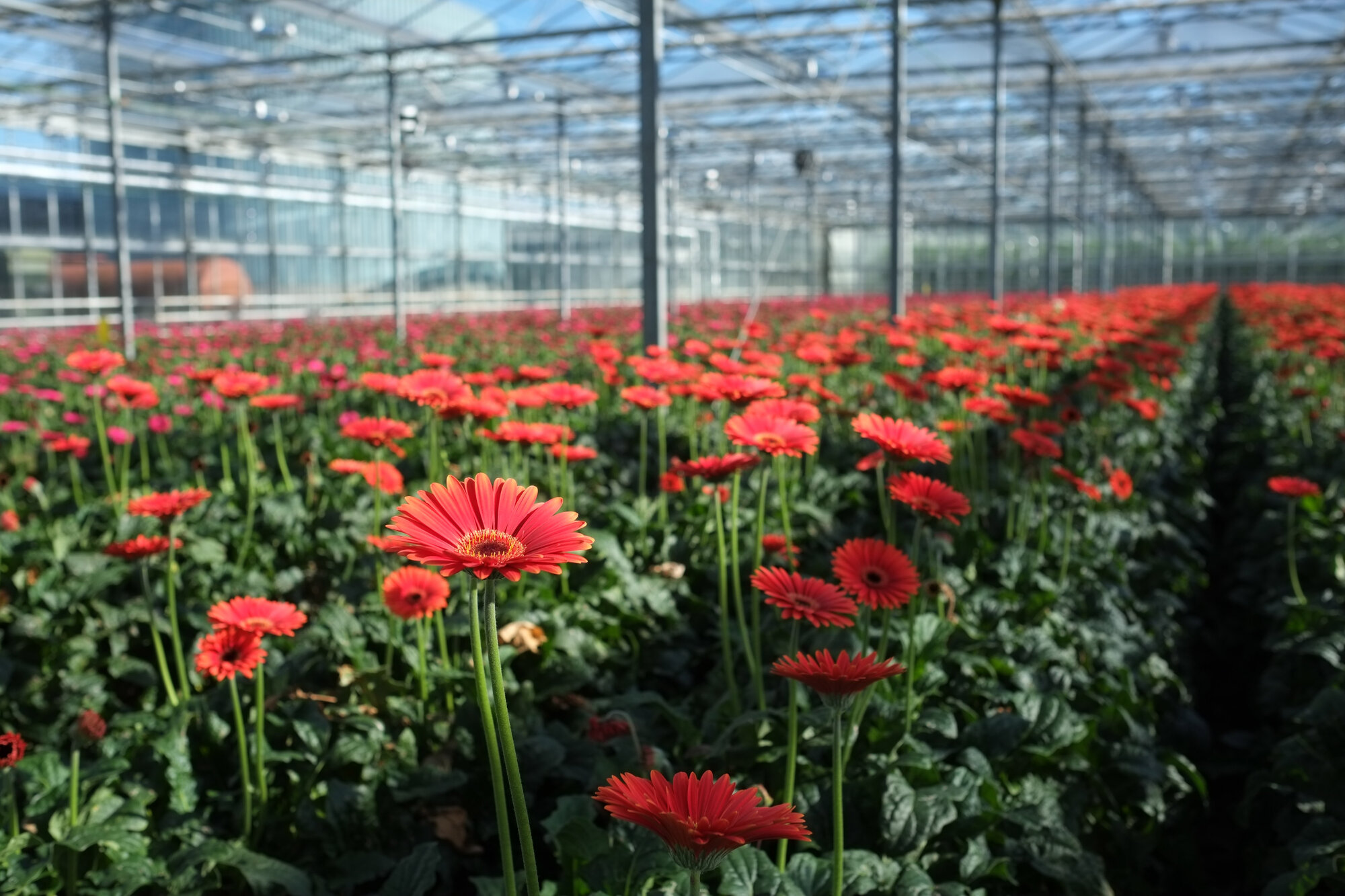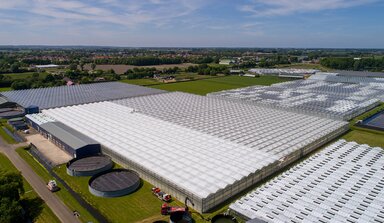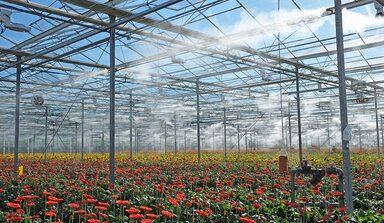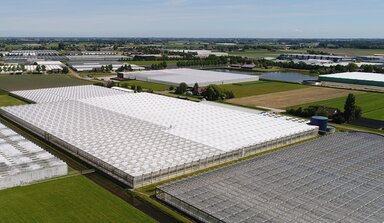Plants prefer uniform climate
Occasional light stress makes ornamental plants stronger. But generally speaking, plants prefer uniformity.
A greenhouse plant that always has the ideal climate conditions won’t become the strongest plant. Occasionally receiving too much light, heat or cold or a slight water shortage – all conditions that encourage the plant to make antibodies to protect itself against adverse conditions – will make it stronger.
But usually the grower doesn’t have to worry about this: Their challenge is to create a climate that is as even as possible. Because plants like uniformity. Varying conditions means that the plants constantly have to adapt which costs them energy and thus production.
Heat stress, light stress and drought can all lead to (sometimes large) production losses. Often these stresses occur together. To understand this better, we’ll discuss them separately.
Heat stress
All chemical processes in the plant are highly dependent on temperature. If it’s cold the processes run slowly. As the temperature increases, these processes run faster until a certain limit is reached. Beyond that damage can occur: photosynthesis slows down considerably, enzymes and other proteins get damaged and the production of new proteins is impeded. If that occurs for a long time, the plant dies. The sensitivity to heat varies by species, but many greenhouse plants can’t endure temperatures above 40°C for long.
As the temperature increases the crop transpires more but only up to a limit. If the plant cannot transport water fast enough to maintain the increased level of transpiration it closes its stomata. As a result plant temperature increases very fast and damage can occur. If the grower has the equipment is misting a good solution in that case.
A particular effect of heat stress is poor setting. This can occur even at less extreme temperatures as the quality of pollen decreases. However, this is of little importance to most ornamental crops, but there are some exceptions, for example, fruit-bearing pot plants.

Light stress
Heat stress occurs at high radiation but also large amounts of light causes problems. The first phase of this is called photo-inhibition: the plant temporarily switches off its photosynthesis “apparatus”. This is a way to prevent the situation getting even worse. When the light level drops again, photosynthesis will resume.
But there is a limit to this defence mechanism. If the high light level continues free radicals form. These are highly reactive molecules that damage everything in their path. This leads to irreversible damage to cell membranes, enzymes, proteins and DNA. It is a situation that should be avoided at all times because this is an enormous blow to production and it causes visible damage to the plants, such as dried up and dead leaf edges (or even entire leaves) and flowers.
Drought stress
The plant experiences drought stress if the water balance is not correct. That is to say, the supply is not sufficient to compensate for water lost by transpiration. Drought stress occurs when the water supply leaves a lot to be desired but also when transpiration rises so quickly that the plant can no longer keep up. This happens in a hot and dry greenhouse climate. In extreme cases the water column in the plant’s xylem ‘breaks’ and air bubbles occur in the vessels. The water supply through such a vessel stops. The plant does have mechanisms to solve this problem but only when the situation becomes less extreme.
When the drought stress is severe the plant closes its stomata to prevent further water loss. This results in the plant temperature increasing, leading to a risk of damage due to heat stress. Drought stress can also largely be solved by means of misting.
Coatings, an important tool
Coatings and screens help to control these situations. ReduSol is the recommended coating for plants that can’t handle a high light level at all. Crops that are more light tolerant can benefit from light, without the associated heat stress, by using ReduHeat, as this allows PAR-light (needed for photosynthesis) to enter and reflects NIR radiation (which causes a rise in temperature).
Many crops also benefit from diffused light: the upper leaves then receive slightly less light which reduces the risk of light stress. Leaves at the bottom receive more light and can contribute to production. The climate under ReduFuse is more even and less extreme, partly because there are no bright light spots. It is precisely in these spots where light stress can occur. Finally ReduFuse IR combines the advantages of diffused light with the reflection of heat radiation.


